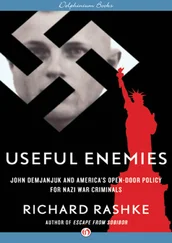The Home Office employed informers and agents provocateurs during the French revolutionary wars and their turbulent sequel. Lord Sidmouth, Home Secretary during 1812–22, became convinced by his sources, so he told the House of Lords in 1817, that ‘scarcely a cottage had escaped the perseverance of the agents of mischief’. Radicals, warned Sidmouth, ‘had parliamentary reform in their mouths, but rebellion and revolution in their hearts’. The Cato Street conspirator Arthur Thistlewood was incriminated by a bevy of police spies, including John Castle, a maker of paper dolls for children, who was also a bigamist and pimp, and George Edwards, a maker of plaster figurines, whose bestselling line was a bust of the headmaster of Eton which pupils bought to use in the manner of a coconut shy. The defence of the realm from internal foes has always needed its Pickles, Randoms and Castles. 5
Mid-nineteenth-century London became a haven for political exiles (predominantly German, but some Italian). Most were quiescent refugees who sat smoking, talking, eating and drinking in Soho dives, but one account of 1859 presents a minority group of active conspirators gathering in a small Whitechapel Gasthaus known as the Tyrants’ Entrails: ‘the incandescent ones, the roaring, raging, rampaging, red-hot refugees; the amateurs in vitriol, soda-bottles full of gunpowder, and broken bottles for horses’ hoofs’. The surveillance of these irreconcilables was the preserve of foreign police spies. A Prussian spy reported in 1853 on one exile who had been born in the Rhineland, had been radicalized in Berlin and was living in two rooms in Dean Street, Soho: ‘everything is broken down, tattered and torn, with a half inch of dust over everything … manuscripts, books and newspapers, as well as children’s toys, and rags and tatters of his wife’s sewing basket, several cups with broken rims, knives, forks, lamps, an inkpot, tumblers, Dutch clay pipes, tobacco ash – in a word, everything top-turvy’. As to the paterfamilias, ‘Washing, grooming and changing his linen are things he rarely does, and he likes to get drunk. Though he is often idle for days on end, he will work day and night with tireless endurance when he has great work to do. He has no fixed times for going to sleep and waking up. He often stays up all night, and then lies down fully clothed on the sofa at midday and sleeps till evening, untroubled by the comings and goings of the world.’ It was in this squalid chaos that Karl Marx did the preliminary thinking that led to Das Kapital . 6
Every successful military leader valued intelligence reports. ‘I am always preceded by a hundred spies,’ the all-conquering Frederick the Great of Prussia said in the 1750s. His decision to go to war in 1756 was based partly on the intelligence received from his spy in the Austrian embassy in Berlin, and from the interception and decoding of messages sent by the Dutch envoy in St Petersburg to The Hague. Half a century later Napoleon declared, ‘one spy in the right place is worth 20,000 men in the field’. International diplomacy also suborned well-placed informants among the desk-bound officials of other great powers. As one example, Lord Cowley, Ambassador in Vienna during the 1820s, had the private secretary of the Austrian Foreign Minister Metternich in his pay. 7
An intelligence department to measure, limit and manage the risks entailed by the territorial rivalry in Asia between England and Russia was developed in London from the 1850s. This department worked with successive prime ministers and the Foreign Office to inform and strengthen imperial policy-making. William Beaver, in his pioneering study of Victorian military intelligence, argues that the Pax Britannica was intelligence-based and intelligence-led. The London government’s success during Victoria’s reign in protecting its ideals of progress, prosperity and peace was achievable only by investigating, watching and listening to hostile powers, and by collating, interpreting and acting on intelligence about potential foes. The efforts of this War Office sub-division meant that for over half a century the British Empire waged colonial wars in Asia and made localized interventions in Africa, but avoided major warfare in either Europe or Asia. ‘Britain’, says Beaver, ‘played her cards well because she sat facing the mirror.’ 8
This systematic intelligence-gathering was instigated by Thomas Jervis, a retired Indian Army officer of whom it was said that cartography was second only to Christianity as the ruling passion of his life. Shortly before the outbreak of the Crimean war, he bought copies of the Russian army’s secret map of the Crimea and of the Austrian staff map of Turkey-in-Europe from a source in Brussels. At his own expense he then provided the War Office with tactical maps of the seat of war. These proved invaluable at a time when British military inadequacy in the Crimea was being exposed by The Times war correspondent and by war artists whose drawings dismayed readers of illustrated magazines. The politicians sought to deflect public anger at the maladministration and tactical failures in the Crimea by incriminating the military. Sidney Herbert, the reform-minded Secretary of State for War, told the House of Commons that responsibility for the bungles ‘lies with that collection of regiments which calls itself the British Army and not with the Government!’ 9
Jervis campaigned for peacetime map-making, fact-gathering and tactical analysis. In 1855 he was appointed director of a new Topographical & Statistical Department (T&S) charged with supporting reconnaissance in war and intelligence-gathering in peacetime. This was reconstituted in 1873 as the Intelligence Department (ID). Although the Horse Guards generals were relentless in disliking the ID as an incipient General Staff which would reduce their prerogatives, the ID soon proved its value to the great offices of state by discounting the bellicose opinions of the military hierarchy. It provided prime ministers and foreign secretaries with evidence-based intelligence shorn of the generals’ bluster. ‘If you believe the doctors, nothing is wholesome,’ the Foreign Secretary and future Prime Minister Lord Salisbury said in 1877: ‘if you believe the theologians, nothing is innocent: if you believe the soldiers, nothing is safe.’ By the 1880s the ID was a major supplier of intelligence to the Foreign Office as well as a prototype general staff for the War Office. 10
ID officers scoured the foreign daily press, and weekly and monthly periodicals, for material on foreign armies, territories and thinking. This was later known as open source intelligence (OSINT). Interesting items were indexed under four or five headings, and pasted into cuttings-books. The cellars of the nondescript ID offices at 16–18 Queen Anne’s Gate, Westminster, two minutes’ walk from the Foreign Office and Downing Street, bulged with the largest secret military library in the world. Within months of the advent of the Dewey Decimal system of cataloguing in 1876, the ID had begun cataloguing the information in its holdings to as much as seven decimal points. Its officers took pride in map-making, and established cartography as a valued precision craft. Their voracity in amassing facts, and their canny analysis of material, provided the Foreign Office, the Cabinet and ministries with product that was both hallmarked as reliable and based on innovative thinking. The ID was a paper-bound bureaucracy, in which lucid, clarifying desk-work brought promotion: Sir John Ardagh, Jervis’s ultimate successor as the ID’s mastermind, was renowned for producing ‘beautifully expressed far-seeing memoranda on the most abstruse questions’. 11
The Indian Army remitted recurrent scares about Afghan uprisings and the mustering of Russian battalions. Lord Dufferin was rare among viceroys in discounting the likelihood of a Russian invasion of India: he protested in 1885 against ‘putting a frightful hole in our pocket’ by mobilizing the Indian Army ‘every time that a wretched Cossack chooses to shake his spear on the top of a sand-hill against Penjdeh’. Prime ministers learnt to trust ID reassurances about Russian intentions. Responding to an Indian Army alarm that Russia was preparing a major invasion of Afghanistan and India, the ID obtained and analysed the annual contract for procuring flour for the Russian army. It ascertained that there were no plans to build or expand flour points for bakeries on the trajectory of the planned invasion. As bakeries on lines of march to the Hindu Kush were indispensable to invasion plans, the ID advised the Foreign and India offices that without bread supplies there would be no military advance. This was a radical new way of assessing risk and laying plans. 12
Читать дальше












